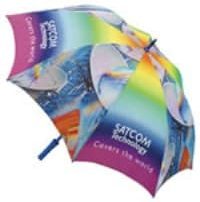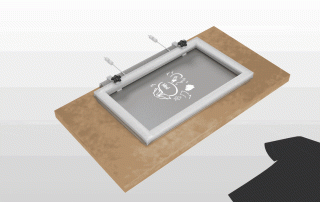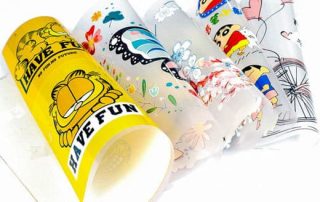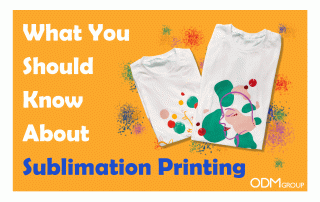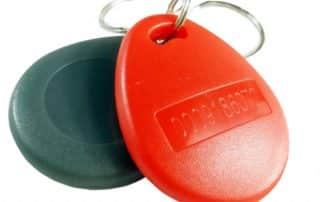When it comes to imprinting a logo on a T-shirt or other promotional apparel, several options are available. The most common alternatives are screen printing and custom heat transfer. This naturally raises the question: Which method is superior?
Indeed choosing the right printing method makes all the difference in creating eye-catching designs that leave a lasting impression. In this blog, we will delve into the specifics of screen printing and custom heat transfer, equipping you with the necessary knowledge to decide between these two techniques.
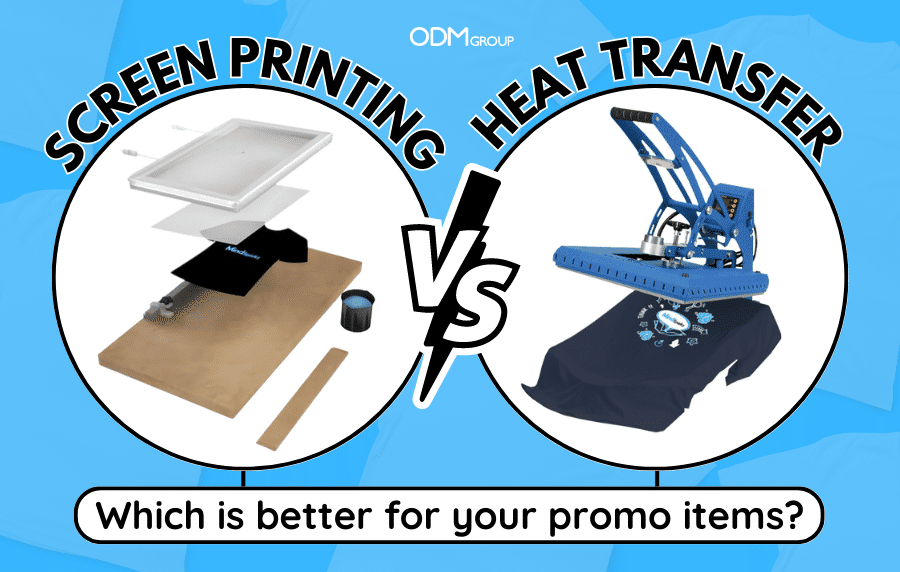
What is Silkscreen Printing?
- Silkscreen, or screen printing, is a traditional and widely used method for customizing promotional products. It involves pressing ink through a fine mesh screen onto the product’s surface, creating a vibrant and durable print.
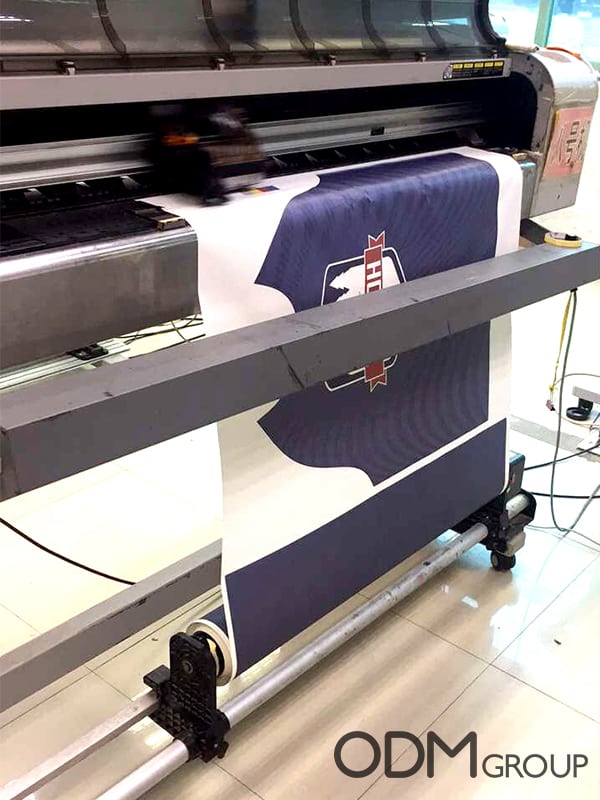
Silkscreen printing may be slower and more meticulous than modern printing techniques, but it produces elegant results. The vibrant designs and graphic styles make it highly popular among customers.
Despite technological advancements, screen printing still holds its ground due to the unique outcomes it offers. It is particularly well-suited for natural fabrics as they can absorb the ink more effectively than synthetic fibers. However, it can also be used on various materials such as microfiber polyester, plastics, wood, and ceramics.
Pros:
- Durable.
- Adaptable.
- High Quality.
- Ideal for high-volume orders.
Cons:
- Less cost-effective for smaller orders.
- Prints may crack and fade with washing.
- Creates a stiffer feeling shirt than heat transfer
The process of screen printing:
- The first step involves creating a design that will be printed onto the silk.
- A screen is prepared with the desired design. The areas of the design that need to be printed are left open, while the non-printable areas are blocked out.
- Next, ink is applied to the screen. The ink only passes through the open areas of the screen, transferring the design onto the silk.
- The ink is allowed to dry or cure, resulting in a finished product.
Screen printing is a suitable choice when:
- Your logo is simple and includes bright colors.
- Your target audience values high-quality, long-lasting apparel.
- You want to maintain the soft feel of a Tri-blend shirt or similar garment.
- You’re printing simple logos on dark materials.
- You want the finished product to withstand machine washing well.
- You have a large order to fill.
- All shirts will have the same logo, lettering, and other decorations.
Get a complete understanding of this printing technique from this blog:
Here’s an actual video of how silkscreen printing is being done:
What is Heat Transfer Printing?
- Heat transfer, also called heat press printing, is a modern technique that utilizes heat and pressure to transfer a design onto the product.
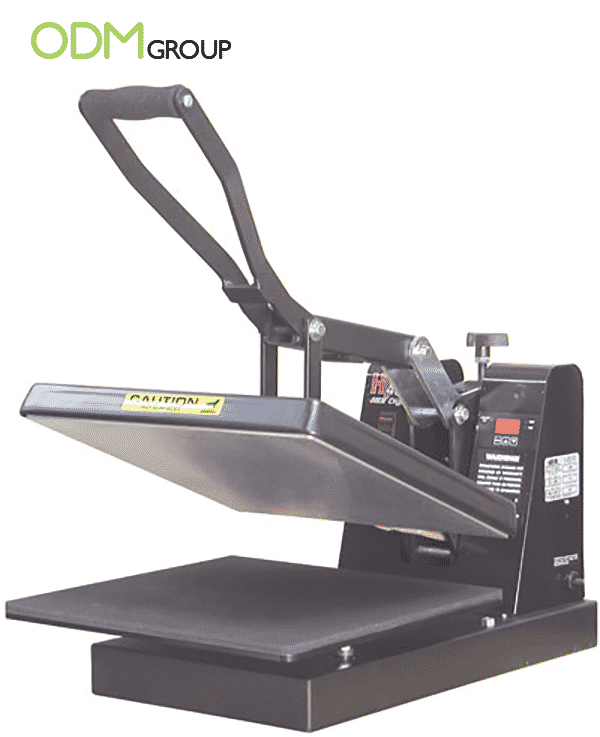
Heat transfer printing offers versatility and can be used on various surfaces, including fabrics, ceramics, and even metals. It is particularly beneficial for complex designs and small production runs.
This modern technique has gained popularity due to its ability to produce high-quality results. While it is best suited for synthetic fabrics that can withstand heat and pressure, it can also be used on a wide range of materials, such as cotton, polyester, ceramics, and metals.
Pros:
- Cost-Effective.
- Versatile.
- User-Friendly.
- Good Quality.
Cons:
- Time-Consuming.
- Not Suitable For Printing High Volumes.
- The Prints Fade Easily
The process of heat transfer printing:
- Create a custom logo or design that will be printed onto the transfer paper.
- Print the design onto the transfer paper using a printer with specialized inks. The ink is then thermally transferred from the paper to the fabric or surface using heat and pressure.
- Place the transfer paper with the printed design onto the fabric or surface. Apply heat and pressure using a heat press machine, which causes the ink to melt and bond with the material.
- Allow the fabric or surface to cool, and then carefully remove the transfer paper, leaving the printed design behind.
Heat printing is a suitable choice for:
Small orders or frequent small orders.
Transferring intricate images with three or more colors.
Individualizing transfers with different numbers and names.
Valuing environmentally-friendly products.
Needing high-quality images for short-term use.
Understand this method more in this blog:
Screen Printing vs Heat Transfer – What are the Pros and Cons?
Screen printing vs Heat transfer- which printing technique is best for me? Let’s make a brief comparison between these two popular methods.
-
Quantity
Screen printing will be ideal if it involves printing large batches of garments. However, this will not be a good option for printing smaller batches of merchandise because of the labour and equipment used. For each colour, a different screen is used. So, the more complex the design is, the more screens are used to achieve the desired colour and design.
On the other hand, heat transfer would be great for small batches of garments or custom promotional merchandise. Designs can be manipulated digitally, so modifying the design is so easy.
-
Design Quality
Screen printing remains one of the most used printing techniques because it creates long-lasting and vibrant patterns on garments and other materials such as plastic, silicone, wood, and glass. This is also perfect when designs require one or a few solid colours. Another advantage of screen printing is that you can emboss, add glitters, or make the prints glow in the dark!
Heat transfer, on the other hand, can give you vivid and detailed prints, so this is ideal for complex designs with plenty of colours. However, the durability of the printed design may fade away easier than screen-printed ones. Moreover, the printed designs could appear stiff compared to screen-printed designs.
-
Cost
In screen printing, a different screen is required for each colour, meaning the designer will have to use multiple screens to achieve complex designs. Customising large batches of branded bar towels, promotional printed T-Shirt, and custom phone accessories utilising this method will prove more economical than heat printing. However, the process can be costly and time-consuming if you customise a few items with small details and plenty of colours.
As for heat transfer, set up cost can be quite inexpensive, especially if the products to be printed on are small to medium size. This is also perfect for customising a small batch of products. A large printer will be used for large items such as tablecloths, umbrellas or customised bed sheets. The overhead cost can be a bit pricier than a t-shirt heat press.
-
Environmental Impact
Of course, aside from each printing method’s financial and aesthetic aspects, we should also consider their impact on the environment.
Plastisol, a PVC-based ink, is commonly used in screen printing. However, it poses health and environmental hazards as it contains carcinogens. However, there’s a greener alternative. Water-based ink! In addition to being eco-friendly, it is versatile as well. With water-based ink, designers can print on almost any type of item and textile.
While heat transfer itself may not have significant environmental implications, the generation of transfer paper waste should be considered. Consider using recyclable or sustainable transfer paper options.
More printing methods you should know about:
Laser engraving is a unique printing method that uses a laser to create high-quality permanent markings on metal surfaces. While this technique is frequently used in metal, can we laser marking on plastic?
Wrap printing is a decorative process of printing an image, brand name, logo or design on a special kind of vinyl that can be installed on a large surface.
When it comes to printing in rubber, synthetic fabric, and plastic substrates, your best option is dye sublimation. It is the use of heat to transfer an image to a material.
If your material is fabric and you’re looking to elevate your brand, literally and figuratively in your consumers’ minds, you should check out embroidery! We listed its advantages and disadvantages for you here:
From material selection to developing and finishing learn more about acid etching and the advantages of using it for your branded merchandise. See more details in the blog below:
Discover a myriad of decoration techniques to elevate your brand and make it stand out among competitors. Captivating consumers and piquing their interest in your offerings is crucial for establishing a strong brand image. Explore a range of innovative decoration methods on this page to create an irresistible appeal for your brand.
Final Thoughts
To fully maximise the advantages of these methods, take into consideration the factors mentioned above. More importantly, speaking with a product designer who can guide you throughout the design process is critical.
If you need help customising your marketing products and custom retail merchandise, don’t hesitate to contact the ODM Group. Our team will assist you in designing and sourcing promotional products. We work closely with China and Vietnam factories and visit factory floors and conduct factory audits to ensure that your products are made according to your requirements.
Printing Methods FAQs
What is the difference between screen printing and heat press?
Screen printing involves creating a stencil (or screen) of the design, applying ink over the stencil, and using a squeegee to push the ink through the mesh screen onto the material. Heat press, on the other hand, involves using a heat press machine to transfer pre-printed designs onto the material using heat and pressure.
What is screen printing ideal for?
Screen printing is ideal for simpler artwork with 1-3 ink colors or large quantity orders. It typically offers higher bulk discounts compared to heat press transfers, making it a more cost-efficient option for high quantities.
What is heat press ideal for?
Heat press transfers are better suited for oddly-shaped garments, such as hats, backpacks, and fanny packs. It is also suitable for printing sportswear jerseys, slogans, or small, multi-colored graphics. Heat press allows for high-resolution images and is ideal for complex designs with many colors.
What equipment is required for screen printing and heat press?
Screen printing requires more equipment compared to heat press. A screen printing setup typically includes a screen printing machine, space for setup, and additional equipment like a degreaser, emulsion, scoop coaters, and a squeegee. On the other hand, a heat press business requires a heat press and an inkjet printer, which takes up less space.
Which method is more cost-effective for large volume orders?
Screen printing is more cost effective for large volume orders compared to heat transfers. Heat press transfers require the use of heat transfer equipment and can be more expensive for larger quantities.
Is heat press easier to learn and more portable compared to screen printing?
Yes, heat press is generally easier to learn and more portable compared to screen printing. Heat press allows for quick and easy customization, while screen printing can be slower and more cumbersome to set up and produce each color. Heat press is also more portable and can achieve the same look and feel as direct screen printing.
Can a heat press be used for curing ink?
Yes, a heat press can be used to cure ink. It is a versatile tool that can be used for various purposes in a screen printing shop, including curing garments and printing at live events.
Can screen printing or heat press be used on any type of fabric?
Both screen printing and heat press can be used on a wide range of fabrics, including cotton, polyester, blends, and more. However, it’s important to consider the fabric’s heat sensitivity and texture when choosing the appropriate method. Some fabrics may require special treatments or adjustments in the printing process.
Which method offers better durability and longevity for printed designs?
Screen printing generally offers better durability and longevity for printed designs. The ink used in screen printing is typically thicker and more resistant to fading or cracking over time. Heat press transfers can last a long time, but they may fade or peel after repeated washes or exposure to harsh conditions.
Can screen printing and heat press be used for intricate or detailed designs?
While both methods can handle intricate or detailed designs, screen printing is better suited for such designs. Screen printing allows for finer details, sharper edges, and a wider range of color options. Heat press transfers can still produce detailed designs, but they may not achieve the same level of precision as screen printing.






